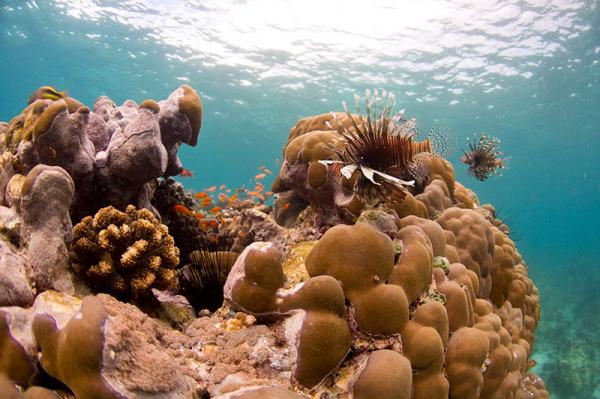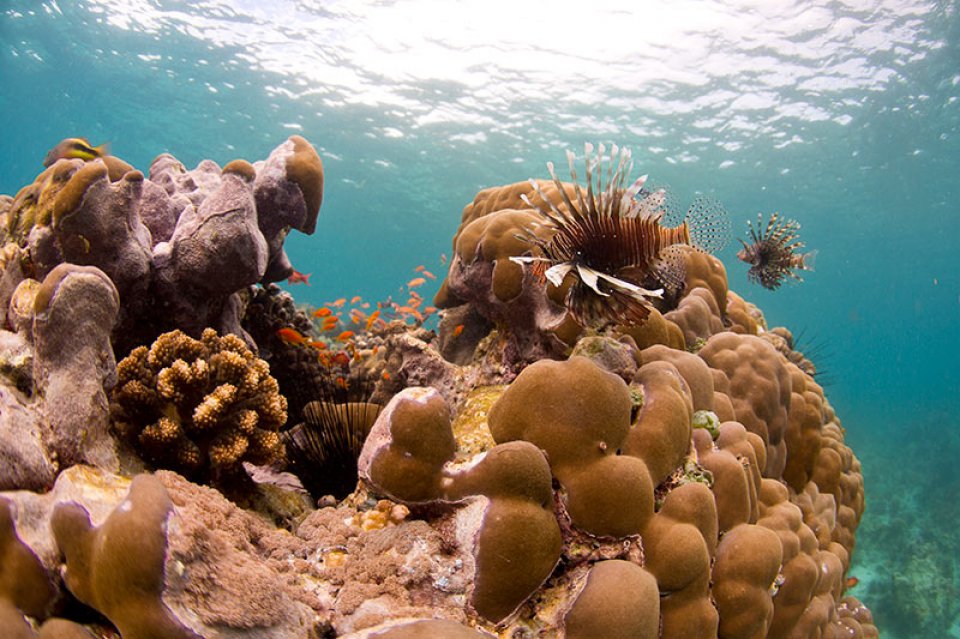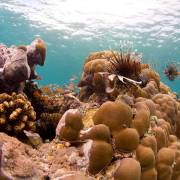Dive in Pemba Island
Diving packages in Pemba Island
-
3 day 6 dives package
3 day x 2 morning boat dives including all equipment dive leader, water, coffee, tea, snacks, fruits, surface interval on one of the secluded beaches pristine reefs teaming with life400 $ More Information -
one day
one day 2 morning dives with personalized service, professional dive leader, including all equipment, water, tea, coffee, snacks, fruits, surface interval on one of the secluded beaches160 $ More Information -
PEMBA, ZANZIBAR - 6 NIGHTS + 5 DAYS DIVING
Packages (Accommodation + Diving)All prices are in USD, ALL-INCLUSIVE***Including 3 meals per day, tea & coffee, soft drinks, bar house drinks6 nights + 5 days diving2 morning dives per DAY,guided, including snacks & drinks on surface intervalAccommodation in 4 NightsAir tickets return from Zanzibar to Pembaground Transfers return from Pemba airport to North hotel2 870 $ More Information
Diving in Pemba Island
The location of Pemba between the Pemba channel and the open ocean is the key for the most incredibly exciting drift dives you will ever make! But that's just not everything: the abundance of marine life, big and small, allows astonishing reef and night diving. Wrecks and deep dives are on the menu too.
The north west of the island, sheltered from the open ocean, is the most popular diving area with many great sites. It is not rare to see manta rays waiting patiently at the cleaning stations based in the vicinity. The Pemba Channel, located between the island and the african continent, brings an astonishing amount of marine life and the current is easily manageable by all diver levels.
Misali island lies few miles west of Chake Chake and is surrounded by a coral reef. Classified as a marine conservation area, it is a spot beyond compare for divers and snorkelers alike. The Misali marine park is part of the Pemba Channel Conservation Area. It represents a reef ecosystem with high biodiversity and socio-economic value, using tourism proceeds to protect the marine ecosystem and support the local communities that depend on the ocean's resources for their livelihoods. The untouched coral reef surrounding the entire island is home to 42 hard coral genera and over 400 fish species and makes Pemba one of the top diving sites in the world. You may see some local fishermen who camp there for few days at a time. If the tide is high, you may as well be able to dive the small blue holes.
At the southernmost point of Pemba, the cold southerly currents have modified the marine life; the Emerald reef has a different mix of plants and corals and it reaches 45 meters (140 ft) deep. It is the best place for deep diving. It is there too that you will be able to dive on the wrecks, the SS Paraportani and the Panza.
The exposed coastline of the east has the strongest currents, hence the use of SMB's are mandatory! this part of the island is too remote for most of the dive operators, so the best way to reach it is during a live-aboard trip, when the weather allows it. Diving at the edge of the open ocean is rewarding: you will get the chance to observe big shoals of tuna as well as hammerhead sharks.
In the clear blue shallow waters, coral gardens provide shelter to a wide range of small tropical fish, including butterfly fish, anthias, the endemic chromis damsels, leaf-fish, and fire dartfish. Ribbon eels, star fish, manti shrimps, many types of nudibranchs are some of the sedentary species living between bommies and gorgonian sea fans. Colorful tube sponges and huge table corals cover the top edge of the drop off. In the deeper water, schools of unicorns, fusiliers, sweet lips, snappers and jacks seem to be watching you as you drift. The Pemba channel is famous for the abundance of sailfish, blue marlin, Wahoo, Dorado, Barracuda, Trevally and Kingfish and you might spot one of them in the turquoise water. Good chance to encounter Eagle rays, giant grouper, Napoleon wrasse, and turtles. Bottlenoses and spinner dolphins cruise regularly the west coast. Manta rays and whale sharks come in season into the channel to feed. If you are lucky, you may even hear a Humpback whale.
Great visibility and currents can be misleading, it is recommended to keep an eye on the depth gauge.
If you really have to choose, go for the steep walls of Njao gap, the cleaning stations at Manta point, the caverns and overhangs of “Fundu gap”, “Swiss reef”, “ Chiles reef”, “ Attaturk reef”, “Emerald reef”, once again, if you really need to choose!
Thanks to its proximity to the equator, Pemba island is a year-round destination. This part of the Indian ocean is affected by a high tidal pattern so don't be surprised as you watch the sea disappear far way, especially on Misali island and the lagoons of the north east coast. Water and air temperatures are always pleasant, with a slight breeze. Long rains will last from April to May, and most of the hotels/resorts choose to close during this period. There is typically a shorter wet season in November but duration and timing are not regular anymore. Diving conditions are generally excellent from July to March with the best period between July and November when the Kusi, a southern wind, brings up the cold clear water. From December to March, the Kaskazi blows from the northeast resulting in choppy seas on the east coast.
There are not many dive centers on Pemba and most of them operate within a hotel/resort, so online booking is the easiest option. Dive sites are reached by boat, typical motorized dhow or Rib boat. Here you'll find small groups and many dive spots, and chances are that you won't meet anybody underwater. Since training and guided dives are led by experienced and professional staff, this is the perfect time to do your drift speciality! Appropriate sites will be chosen carefully to ensure that they are suitable for your level. Live-aboard is another possible way to dive Pemba.
(By Diane Talbotier)

Travel to Pemba Island
The Green Island is part of the Zanzibar archipelago, and lies in the Indian ocean, 50 km east of mainland Tanzania. Known to the word until recently only for its production of cloves and its juju traditions of medicine, Pemba is actually one of Tanzania's best kept secret. Unlike its southern sister Zanzibar, it is an oceanic island and rises up directly from the ocean floor. Magnificent deep sea grounds and shallow coral reefs offer a unique diving experience to the off-the-beaten track travelers.
Regional flights from Tanga, Zanzibar and Dar El Salaam in Tanzania, or Mombassa (Kenya) take you to Chake Chake airport, located at the center of Pemba. If you want to travel by sea, Mkoani in the south of the island receives ferries from Tanzania mainland and Zanzibar. From Kenya, sailing dhows assisted by engine provide a more romantic if not fast transportation to Wete. Once on the island, be patient: taxis are not common but some dala-dalas (local bus) link the main villages. Most roads are unpaved. The virtual Bus stations can be found at each road intersection! Renting a car in town might be a more reliable option.
In town, you will find government-owned hotels as well as some B&B and small inns. There are not many hotels on the island, so if you want to travel around, the best is to organize daily trips and stay in town overnight. Only 3 resorts are scattered from north to south, very remote, and they offer full boarding, tranquility and have their own diving center.
Even if diving is the main reason for the majority to come on Pemba, the island has a lot of activities to offer: walk the nature trails of the primeval Ngezi forest, go bird watching in the mangrove and get the opportunity to observe unique and endangered species such as the Pemba flying fox, the Pemba vervet monkey and the blue duiker. Tour a spice plantation and discover all there is to know about cloves, cinnamon and the other aromatic spices of the island; witness a juju doctor make use of his magic and visit the 11th century arabic ruins. The sandy beaches and shallow grounds are idyllic for swimming and snorkeling. A multiple-day kayak trip from north to south is an original and exciting option to discover Pemba. Then get ready for some of the best diving in the Indian ocean.
(By Diane Talbotier)





